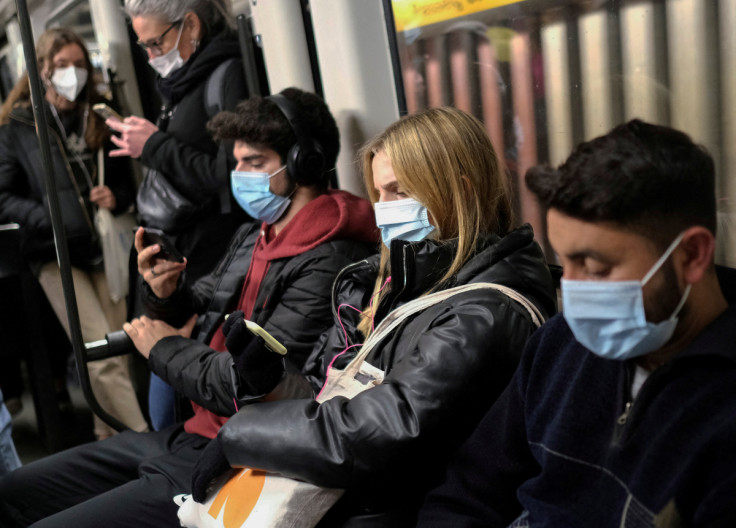Europe Seeing Signs Of Another COVID Wave: Should US Worry?
KEY POINTS
- The WHO and European CDC raised concerns about another COVID-19 wave
- They warned about a possible "co-circulation" with seasonal influenza
- The trends in Europe had been a "harbinger" of what could happen in the U.S.: Expert
Europe is witnessing a rise in COVID-19 cases and health authorities are cautioning about a new wave of infections. What does this mean for the United States?
Authorities from the World Health Organization (WHO) and the European Centre for Disease Prevention and Control (ECDC) have expressed their concerns about another COVID-19 wave.
"Although we are not where we were 1 year ago, it is clear that the COVID-19 pandemic is still not over," WHO's Dr. Hans Henri P. Kluge, ECDC's Dr. Andrea Ammon and the European Commissioner for Health and Food Safety Stella Kyriakides said in a joint statement Wednesday. "We are unfortunately seeing indicators rising again in Europe, suggesting that another wave of infections has begun."
According to WHO's COVID-19 dashboard, Europe has the highest confirmed case count at over 250 million as of Wednesday. This is followed by the Americas, with more than 178 million cases. The region-wise data shows Europe was the only one that logged an increase (8%) in the week that ended on Oct. 2, reported Reuters.
Health authorities are stressing the need to protect people, especially those who are vulnerable to COVID-19. This is even more important amid the influenza season.
"The potential co-circulation of COVID-19 and seasonal influenza will put vulnerable people at increased risk of severe illness and death, with the likelihood of increased pressure on both hospitals and health-care workers, already exhausted from almost 3 years on the front lines of the pandemic," the statement read. "We need to avoid the burden of this co-circulation on our healthcare systems."
They once again stressed the importance of vaccines, with millions remaining unvaccinated against COVID-19 in the region.
"Many of those most at risk of severe COVID-19 are also at high risk of experiencing a serious influenza infection," they noted.
The question now is whether the U.S. will follow suit. Dr. Jennifer Lighter, a pediatric infectious disease specialist with NYU Langone, told TODAY that in the case of previous waves, they "often start in Europe and then come to the U.S.," within a matter of two or three weeks.
Similarly, Michael Osterholm, the director of the Center for Infectious Disease Research and Policy at the University of Minnesota, said "what's happened in Europe often has been a harbinger of what's about to happen in the United States," according to NPR.
The rise, however, is not exactly unexpected. As COVID-19 becomes endemic, it is expected to have a seasonal pattern that sees winter spikes, Lighter noted. Furthermore, with more people taking part in outdoor activities, along with loosening restrictions, there have been more chances for the virus to spread.
"We're releasing ourselves from a lot of those things that kept us protected (during the pandemic)," Dr. Albert Ko, an infectious disease physician at Yale School of Public Health, told TODAY.
While a possible surge toward the end of the year may not be as severe as the previous ones – assuming that no new variant emerges – people are still being urged to remain vigilant
In Europe, for instance, not just the cases, but hospitalizations have also increased, particularly among those who are over 65, according to Ko. And in the U.S., some "300 to 400 people die every day," added Lighter.
With a possible co-occurrence with the influenza season, authorities are stressing the importance of taking protective measures.
"Our message is simple: vaccination saves lives," the health statement read. "There is no time to lose. We encourage everyone eligible, especially the most vulnerable, to come forward as soon as possible for both COVID-19 and influenza vaccination."

© Copyright IBTimes 2025. All rights reserved.






















